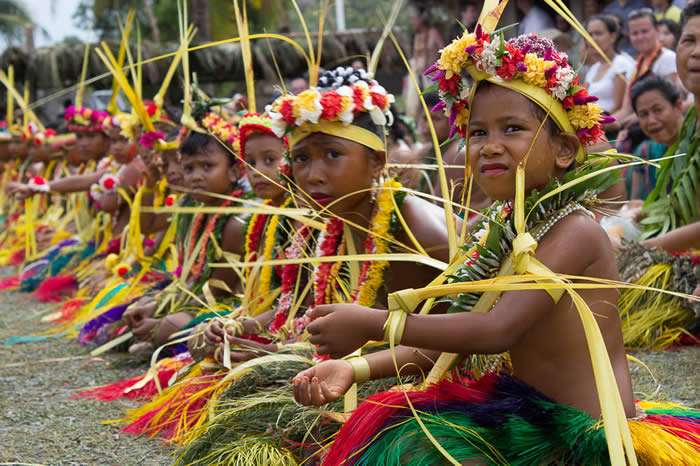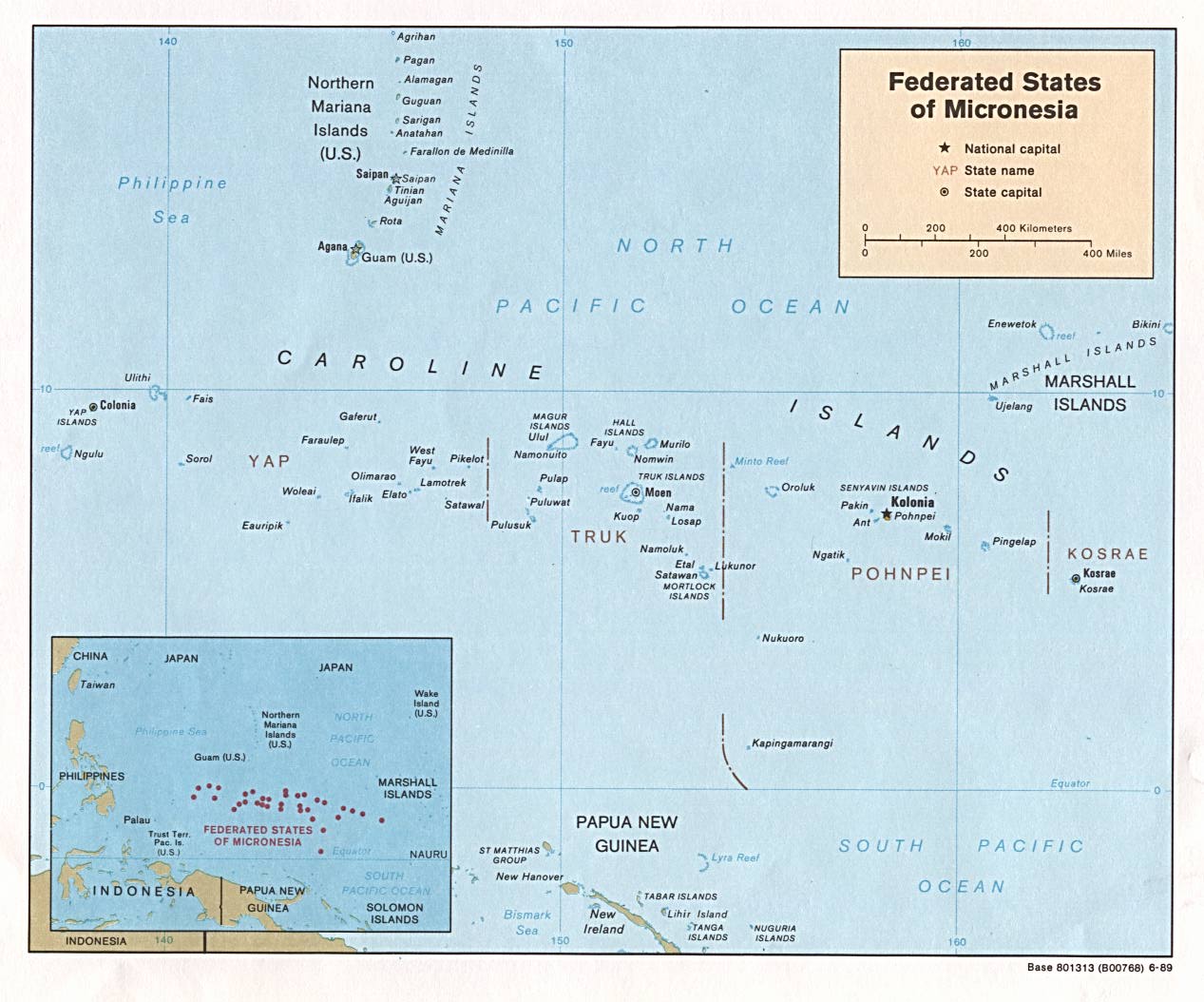Traditional Culture/Meeting houses(Yap)
The meeting house, called "Pe'bai(Pe'ebai)" and "Faluw", is found in each village in the island of Yap, the western-most island chain of the FSM, and it’s most culturally intact. Pe'bai is a kind of public hall where men, women, and children come together for various community activities. Faluws stand along the shoreline and serves as a port, workspace for men, and a learning space for cultivating traditional work skills. To this day, women are not allowed near Faluws. These beautiful and striking traditional architectures of Yap are constructed entirely by hand using only local materials.
Here's how you make a link: Meeting house(Yap).
Here's the image

Fruits and Crops (YAP,CHUUK,POHNPEI,KOSRAE)
Bananas, breadfruits, coconuts, mangoes, pineapples, wild apples, star fruits, papaya, guava, sour sop and so many more local fruits can be found in the islands of the FSM. It is a veritable greenhouse of delectable edibles. The Federated States of Micronesia is one of tropical fruit heaven. It has several fruits and crops that are not commercialized but mainly used in the villages, for instance, breadfruits, sour sop fruits, Karat (Banana), etc. While there are many varieties of banana found in the FSM the "Karat" is unique and has been found to have high nutrient and vitamin content and is mainly used for infants as baby food. The agro-forests of the FSM can be seen everywhere and are an ever-present part of the daily subsistence lifestyle.
Here's how you make a link: Fruits and Crops (YAP,CHUUK,POHNPEI,KOSRAE).
Here's the image

Chuuk dress (CHUUK)
The Chuuk dress is a locally famous fashion dress among Micronesian women for its colorful and intricate patterns. It is a loose-fitting one piece skirt and one that many visitors find attractive as well. It comes in various colors and characteristic designs that bring out the true FSM Island style fashion and lifestyle.
Here's how you make a link: Chuukese Dress (CUUK).
Here's the image

Love Stick (CHUUK)
Traditionally, young men would own personalized wooden love-sticks on which they would carve two of the same design. A short one would be carved to be utilized for his hair, the long one would be for the woman. When a man likes a woman, he uses the long love-stick to poke into her hut or her hair. If the love-stick's design is that of the man she likes, she will pull the love-stick signaling for him to come in. If the woman pushes the love-stick out, it means she is not interested in the man.
Here's how you make a link: Love Stick (CHUUK).
Here's the image:

Island Skills (YAP, CHUUK, POHNPEI, KOSRAE)
Island skills: building a local hut, weaving a mat, making ropes from braided palm husks, planting taro, hunting wild boar, making a trap, carving a canoe, climbing a coconut tree, preparing local medicines and tinctures or making lais from beautiful flowers are all important parts of the true Island life-style. Each of the main and outer islands of FSM possesses unique and exceptional skills that are used daily as part of normal life here..
Here's how you make a link: Island Skills (YAP, CHUUK, POHNPEI, KOSRAE).
Here's the image:

Devil Mask (CHUUK)
The story of the Devil Mask originates from a long time ago. On the island of Tol, there lived a legendary ghost that kept stealing food from the starving people. As a result, the people decided to carve a devil mask to scare the ghost away. Later on, it happened in such a way that all the people came together and wore the mask. When the ghost came to their place to steal food, it saw devils surrounding the area. The ghost got scared, ran away, and never came back.
Here's How you make a link: Devil Mask (CHUUK).
Here's the image:
Betel-Nut (YAP,CHUUK,POHNPEI,KOSRAE)
The Betel nut is a form of local chewing tobacco. The betel nut is split open and powdered with lime, wrapped with pepper plant leaf and sometimes a piece of a cigarette is inserted to enhance its effect. It is a practice found throughout the FSM, but Pohnpei and Yap have it in abundance and it is a relatively important exported cash-crop for the local economies.
Here's how you make a link: Betel-Nut (YAP,CHUUK,POHNPEI,KOSRAE).
Here's the image:

Sakau (POHNPEI)
Sakau is a popular local drink among Pohnpeians and it is becoming popular among the three sister States as well. It is a staple of both the culture as well as the local economy. You can find Sakau bars where visitors can witness it being produced the traditional way on the rock and then squeezed for its pleasurable and relaxing mystical effects. Roadside vendors also bottle the tincture and sell it along the roads. Sakau is made from the roots of a pepper shrub (Piper capsicum) and the inner bark of the hibiscus tree and was once reserved exclusively for the high chiefs and nobility, drunk only during important ceremonies.
Here's how you make a link: Sakau(POHNPEI).
Here's the image:

Oranges, Limes. Tangerines (KOSRAE)
Kosrae is well known for its citrus fruits. Oranges, limes, mandarins, tangerines and other citrus are available from numerous fruit stands, such as the one shown in the picture. Whether staying on the island for a stay, or just passing through the airport, citrus – especially the seedless and juicy tangerines – are always available to the traveler that is lucky enough to sample the famous citrus of Kosrae.
Here's how you make a link: Oranges, Limes. Tangerines (KOSRAE).
Here's the image:

Melody Soda Rain
